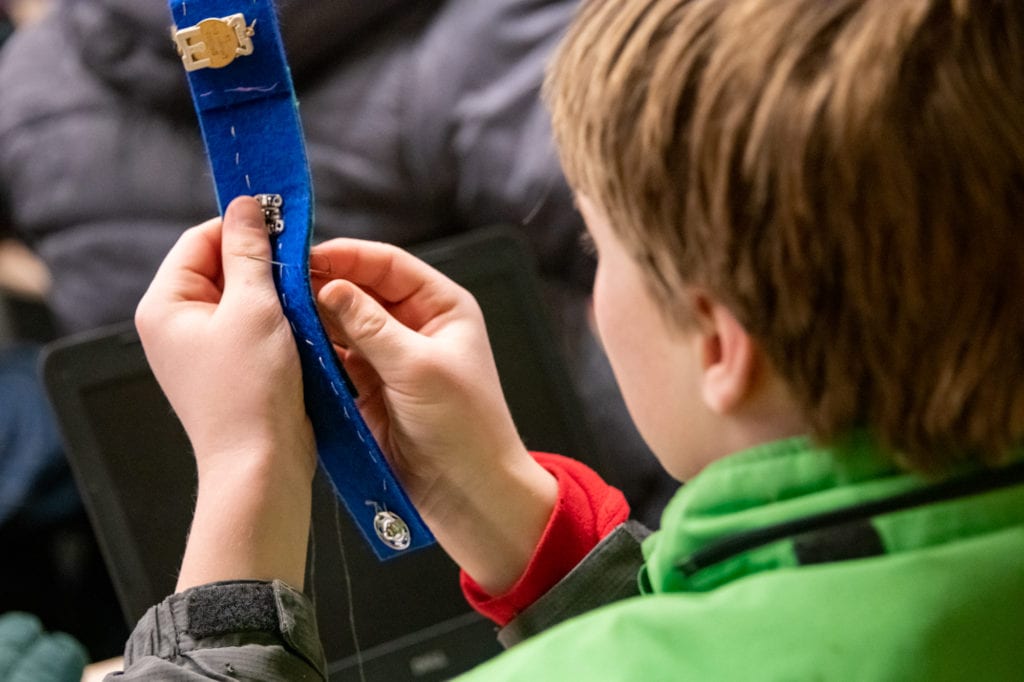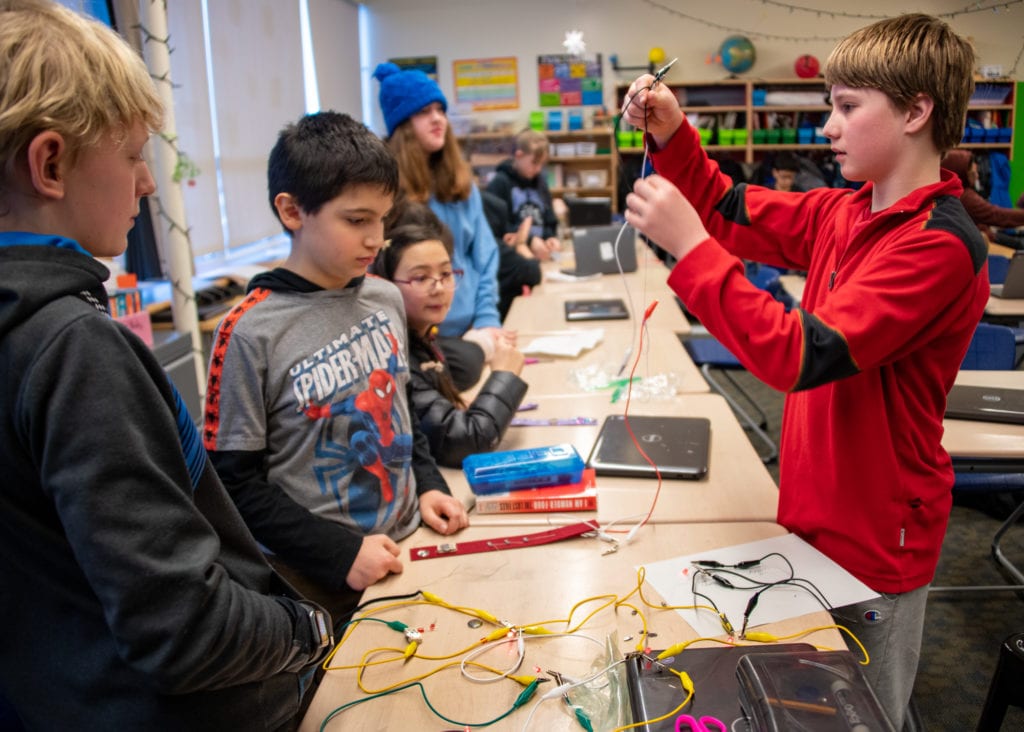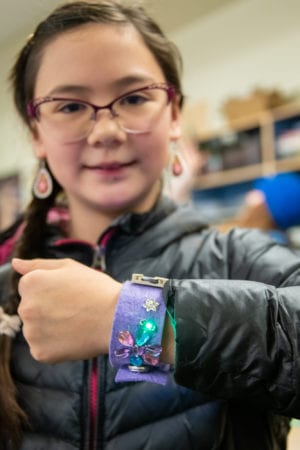
Would you be able to turn a pile of electronic components into a functioning light-up bracelet, without instructions? If not, you might want to consult a Mt. Eccles Elementary School student.
Jan. 9-10, fourth, fifth and sixth graders designed and built their own circuitry using conductive thread which they sewed into felt cloth bracelets. The goal was to craft a bracelet with LEDs that would illuminate when the bracelet was snapped shut.
Students were supplied with batteries, conductive thread, LEDs, needles and fabric. The one thing they weren’t given was an instruction manual. This allowed students an opportunity to experiment and to gain a greater understanding of the principles at work, said sixth grade teacher Krysta Williams, who spearheaded the project. As well as showing students how electricity interacts with circuitry, the project gave them the opportunity to practice managing frustration with setbacks.
“When students are trying to solve problems, they become more involved,” Williams said. “If all I did was stand up there and tell students how to make the bracelet, they wouldn’t have been as interested in the process.”
The project was funded by a $1,000 donation from Cordova Electric Cooperative and with matching funding from financial services company CoBank. Clay Koplin, CEO of CEC, opened the event, where he and other CEC staff delivered a presentation on the basic principles of electricity. Koplin stayed through the first day of the project, fielding questions from students who were confronting the complexities of electrical engineering for the first time.

“I think it’s more powerful than a scholarship, because a fairly small amount of money has impacted so many students,” Koplin said. “If learning about basic electricity can be fun, that’s awesome. Believe me, there were times when I was in college, sweating through calculus and basic circuitry, when it didn’t feel so fun!”
Eleven-year-old Natalia Aiken participated in the project in spite of a snowboarding accident that left her dominant arm in a cast. Though this made it tricky to use a needle and thread, Aiken was still able to craft a convincing bracelet.
“I hate science and math, but this is fun because you get to put the LED lights on and get them to work,” Aiken said.
Student Salina Smith said she enjoyed the project and hoped that her stylish accessory would provoke the envy of other students.
The project didn’t confront only students with unexpected challenges. Though Williams believed she’d ordered twice as much conductive thread as necessary, supplies ran out during the second day of work.
“Things don’t always go the way we’d planned, whether we’re 11 or 41,” Williams said. “It was a good learning experience for me — now I know I need to plan differently … I’m going to fail forward.”
Teaching students the rudiments of sewing ahead of time might cut down on thread consumption during future projects, Williams said. Though some students had prior experience sewing leather pouches during Culture Week events, many students were, in effect, learning how to sew on top of learning electrical engineering.

Despite a lack of supplies, the spirit of scientific endeavor prevailed. Student Hyrum Fish hypothesized that a circuit might be built using pipe cleaners rather than conductive thread. By integrating a pipe cleaner into a circuit using alligator clip leads, Fish found that his theory was correct: the pipe cleaner was conductive. Elsewhere, students who had completed their bracelets engaged in Frankensteinian experimentation, seeing how many lights they could connect to a single battery before it stopped working.
Williams hopes to revise the project and continue it on a yearly basis. CEC also hopes to continue donating to the project, Koplin said.
“My favorite thing is when students get really engaged in a project like this,” Williams said. “The potential for building confidence is so much greater when you figure it out on your own than when you just do what you’re told … To have that time to struggle through and figure out why something hasn’t worked, I think, will have huge dividends as they move forward into any other academic area.”





